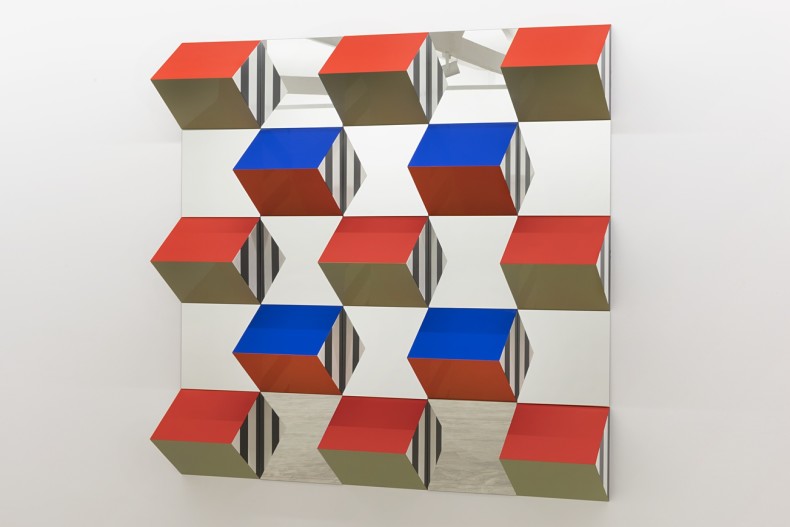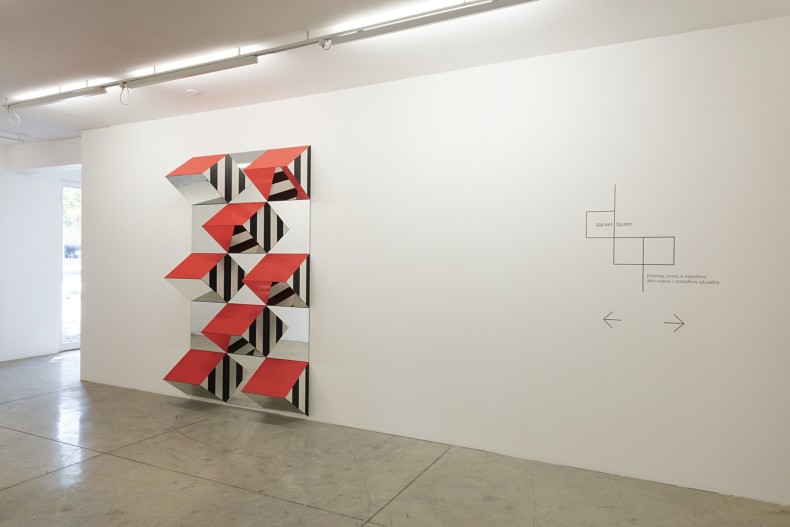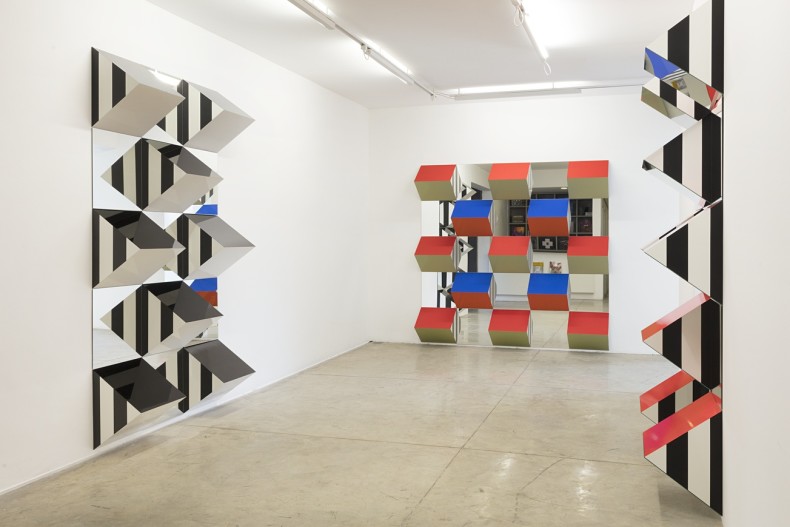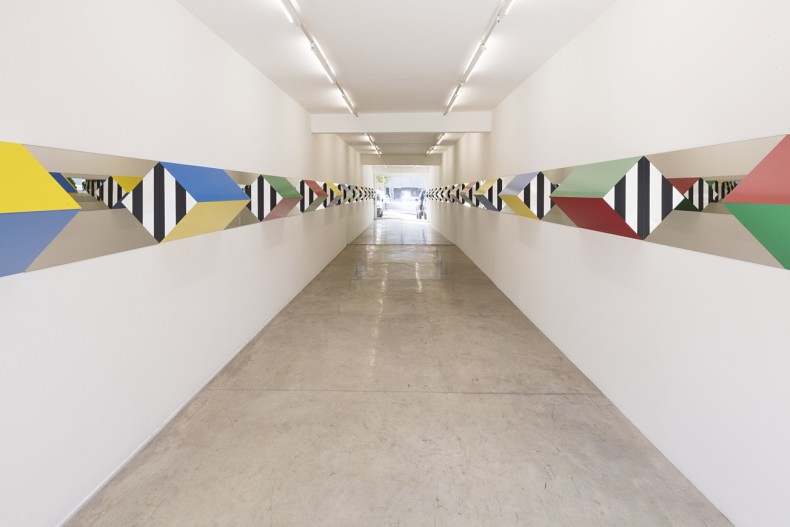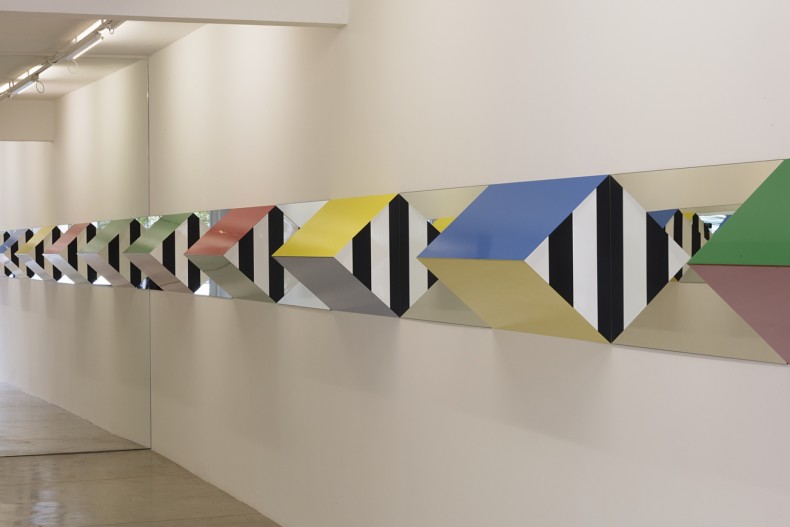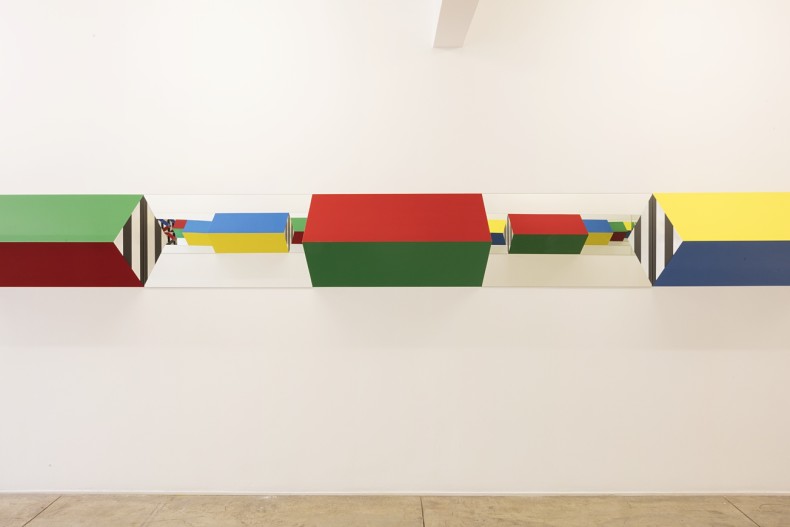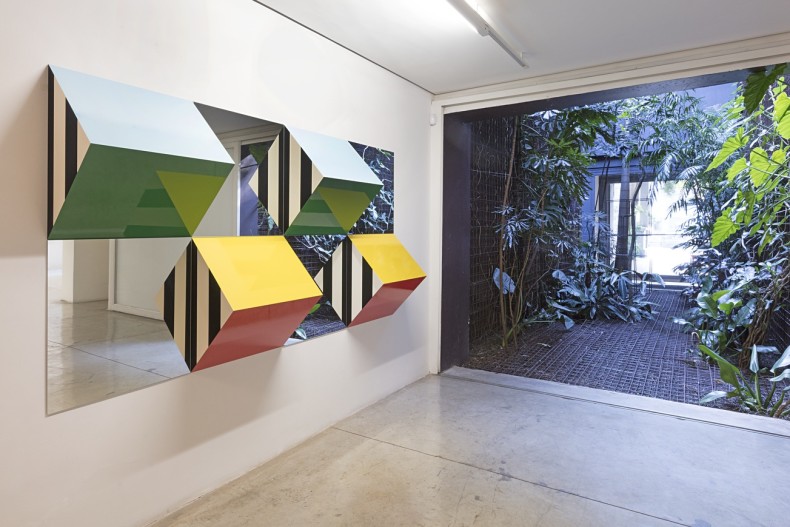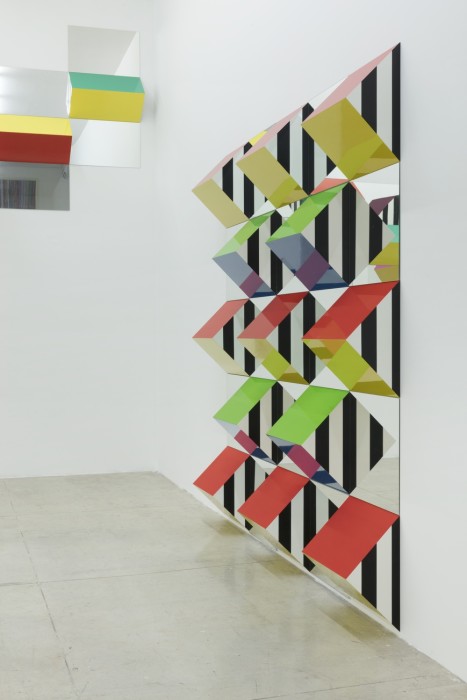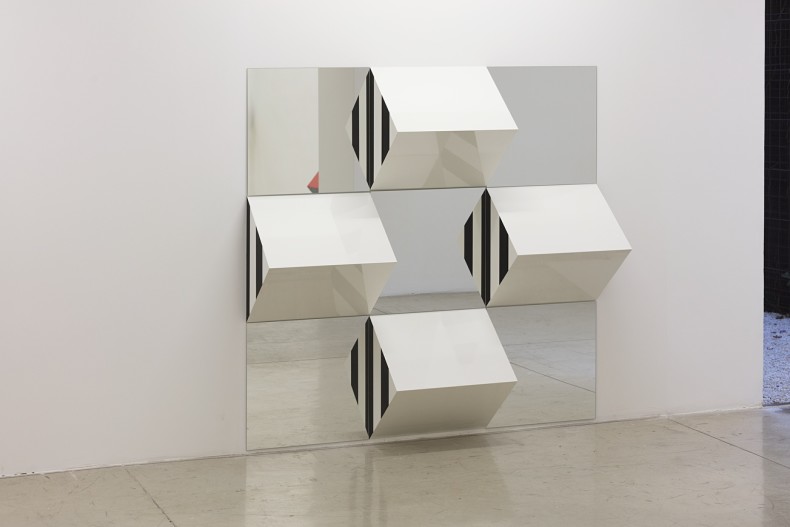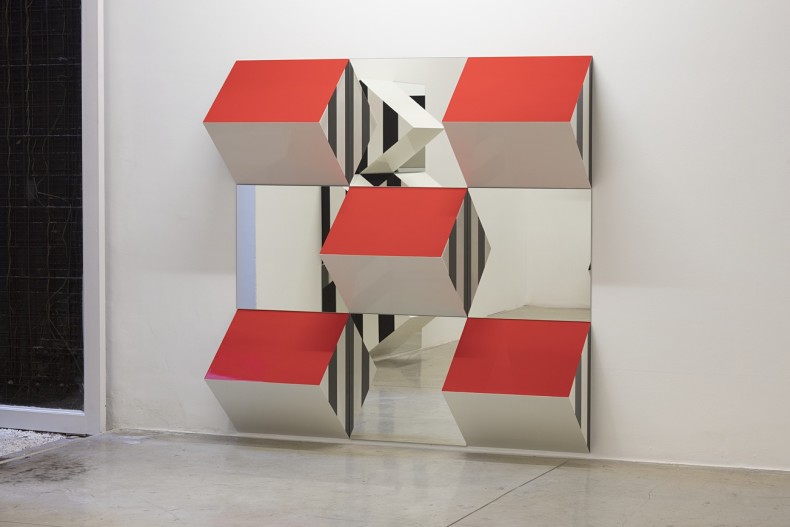After making interventions at Galeria Nara Roesler in Rio de Janeiro, 2015, Daniel Buren brings previously unseen works to the gallery’s São Paulo venue. The acclaimed French artist will present pieces created specifically for this exhibit, set to open during the SP Arte fair. The show will feature nine different sets of three-dimensional wall objects, plus sets of 8-14 mirrors each.
Buren, whose Brazilian appearances also include the São Paulo Art Biennial (1983 and 1985) and a showing at Centro Municipal de Arte Hélio Oiticica (2001) abandoned painting in 1965 for a highly conceptual brand of art based on restraint in the use of elements. He began to use a striped curtain material, the components of which became the basis of his artistic syntax – alternating white-and-colored vertical stripes 8.7 cm wide.
Boasting his trademark frugality of means, whose results are nonetheless surprisingly rich and complex, the artist set about developing his research in multiple supports, even as he proceeded to conquer the architecture of spaces. His unique approach dislocates or highlights ceiling cornices, walls, columns and other elements.
The evolvement of Buren’s trademark into columns was another step forward, spawning iconic installations such as the black-and-white striped columns that populate the Palais Royal courtyard in Paris since 1986. The piece spurred debate on the implementation of contemporary artworks into historic buildings, such as the architect Ieoh Ming Pei’s Louvre Pyramid, completed three years after Buren’s own work.
He also began using mirror systems and transparencies to allow light to reflect and color to project into the environment, as in his amazing 2012 Grand Palais installation. He incorporated alternately blue and transparent glasses to the skylight, projecting a chessboard-like pattern onto the floor. Additionally, numerous colored glass discs set atop columns enabled audience members to pass underneath them, enhancing the color effects.
The street is one of his preferred spaces these days. He created the notion of in situ work in the field of fine arts, to characterize a practice intrinsically tied to the topological and cultural specificity of the places where the work is presented. His more recent offerings are ever-increasingly complex architectural instruments that constantly dialogue with the existing architecture and involve an alteration of space, a playful multiplication of materials (wood, vinyl, plastic materials, grids), and an explosion of color. From the beginning of the 1990s, Buren no longer applied color just to walls; he literally ‘installed it in space’ in the form of filters and colored sheets of glass or plexiglas.
To date, Daniel Buren has produced thousands of in situ installations all over the world. The majority of these are destroyed after being presented, and so do not exist outside the time and space for which they are conceived. However, there is also an important body of permanent works by him in the collections of leading museums around the world.
Buren’s solo show at the Apollinaire in Milan, 1968 and his 1968 and 1969 stints in international events at the Prospect in Düsseldorf marked the true beginning of his rise to celebrity. In the 70s, he began showing his work in museums, often out of France, and in conceptual art exhibits. This period also saw him embrace widely varied supports – walls, doors, poster boards, street signs, paper and canvas under glass, on stairways, trains, ships, in the form of flags on the roofs of Paris, the waistcoats of museum custodians, etc. He was a great talking point and generated controversy in 1971 at the 5th International Exhibition of the Solomon Guggenheim Museum in New York, and in 1972 at the celebrated Documenta V organized by Harald Szeemann. Political changes in the 1980s allowed him to occupy public spaces in a less fleeting fashion, and he began producing permanent works. In 1986, Daniel Buren was awarded the Leone d’Oro at the Venice Biennale for best pavilion.

